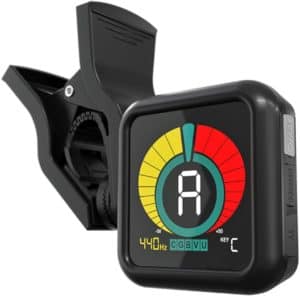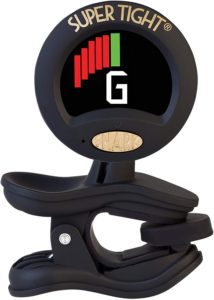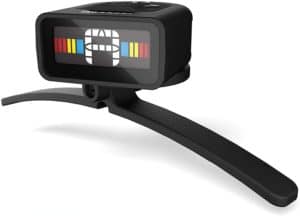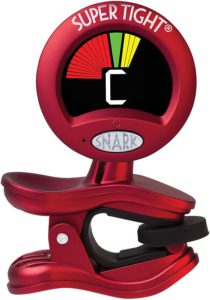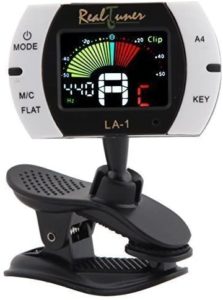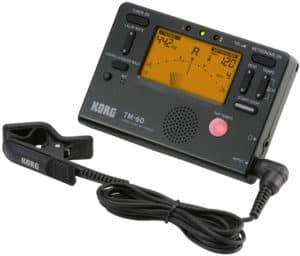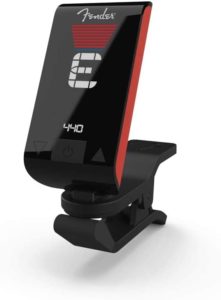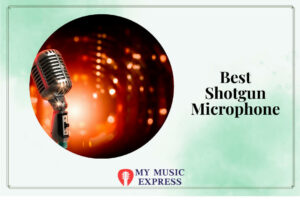Banjo, a classical instrument has its roots in Africa. Similar to guitars, the banjo is used to play folk, jazz, and hip-hop music. Like every other string instrument, the banjo also works on the same principles. To play properly intonated and well-tuned songs, the best banjo tuners are available in a variety of ranges and types.
Banjo is gaining popularity and gives countless reasons for millions to learn and specialize. Like every music lover, even I was fascinated by learning banjo to understand every theory and technique used to play this instrument. Well, it creates the most perfect ambiance where everyone is singing in chorus while the musician creates magic with his fingers using those strings. Sometimes, playing the most divine and peaceful harmony flows through and connects with the soul whereas, at other times the pop music makes you tap your feet on the dance floor.
Best Banjo Tuners – Buying Guide
This article provides information about the best banjo tuners which is essential for the novice as well as a professional.
Factors to look for when buying the best banjo tuners
- Cost- What matters most is the budget. In the market or any other online store, one can find a range of the best banjo tuners from low price to high prices. Many people have a misconception that an expensive tuner offers the best features. But this is not a rat race where you have to compete with another person. You have to act smart and purchase a top-notch tuner within an affordable price range.
- Types- There are a variety of tuners available like analog needle-dial, LCD, or LEDs screens. Other than these, tuners can also be further classified as clip-on, strobe tuner, pedal, polyphonic, and chromatic tuners.
- Clip-on: Clip-on tuners are clipped onto the headstock. When tuning the vibration produced by the string gets transmitted to the tuners through an inbuilt vibration sensor. These sensors do not have a microphone which proves beneficial for musicians to tune in a crowded and noisy environment.
- Strobe Tuners- Stroboscopic tuners also known as strobe tuners are considered to be more accurate. It uses LED lights and strobe patterns to indicate whether the pitch is in tune or not. When the pitch is in tune the rate of the flashing light will match the rate at which the disc is spinning. Thus, the strobe pattern will appear to be frozen or constant.
- Polyphonic Tuners- This type is a more recent one. In polyphonic tuners, the open strings can be strummed at the same time. Instead of checking the tuning of each string, you can easily check the pitch at the same time for every string. This saves a lot of time and effort.
- Chromatic Tuner- A chromatic tuner is more flexible in use. It recognizes the note you are playing and its proximity to the standard note. For example, in non-chromatic tuners, letters will only be displayed as 1E, 2A, and 3D which are the standard ones. Whereas, if you want a low D then it won’t be displayed on a non-chromatic tuner screen as it is not a standard tune. Chromatic tuners not only display the current note being played but also show how out of tune you are. With this other than tuning your banjo to the standard model, you can create a variety of interesting tunes. Before searching for your preferred one, make sure you these factors to buy the best banjo tuners.
Parts of a Banjo
A banjo is a stringed instrument that is made up of two main sections: neck and pot assembly. The long piece of wood recognized as the neck has a headstock or peghead whose main function is to hold the strings and tuners. At the base of the headstock, nuts are adjusted which are used to align the strings. Tuning pegs are used to change the tune or pitch. These pegs function in raising or lowering the pitch. The strings run through the neck or fingerboard. The fingerboard stays stable with a truss rod which is a stout metal rod.
On the fingerboard, one may find frets which are thin metal bars positioned one after other leaving some space. The other section which is the pot assembly is a drum. It consists of various components such as a head, bridge, resonator, bracket hooks, tension loop, tall piece, and heel. The head is the front vibrating part. It is generally made of mylar. This is firmly held using tension loops.
The next inevitable part includes the bridge. It is not directly adhered to with the head but stays in place due to the tension in the strings. The next crucial element is the tone ring placed at the side of the head. Its construction affects the sound quality of your best banjo tuners. After this, we have the resonator which is responsible to make the sound louder. It is present at the back of the head and acts as the sounding board.
How to tune a banjo using electronic tuners
The most common is the 5 string banjo. The strings are set in the standard tuning as open G. Well, you might think what is this open G? The strings are named G, D, G, B, and D in which D is the first string and G is the 5th. Open G means when you will strum the banjo without playing any particular note, it will be playing a G chord. A 5 string banjo plays an open G chord. After this, we have a variety of other tuning used to play different notes. To tune a banjo you need to follow some specific steps.
- The first and foremost step is that you are well aware of each part of your banjo, the names of strings, and every technicality related to it. The special feature of a 5 string banjo is that one string ends up halfway. Its tuning peg is located in the middle of the fingerboard. This placement produces a distinct sound.
- The second step includes clipping the electronic tuner to the headstock. Once the tuner is attached it lights up and displays the name of the string which you just played.
- To tune the banjo, start with the 2nd string and place your index finger on the 3rd fret of the 2nd. Once you strum that particular string, the tuner will show the name of the string and whether it is in tune or not. Turn the tuning pegs accordingly counterclockwise to achieve a sharp(high) pitch and clockwise to achieve a flat( low ) pitch.
This process needs to be repeated for every string to get standard tuning.
Best Banjo Tuners Reviews
KLIQ is a well-renowned brand in the world of tuners and other musical instruments. This clip-on tuner is meticulously designed for a superior hold. The silicon rubber lines cover the entire inner part of the clip protecting it from any damage.
- The amazing full-color LCD screen displays bright colors and easy-to-read large, bold letters.
- The multi-point screen adjustment allows 360-degree rotation of the screen for convenient use.
- It includes a 3V CR2032 lithium battery which lasts for a long time.
- The tuner can be used for a variety of modes like guitar mode, ukulele, violin, bass, and chromatic.
- It is a sturdy and compact tuner that weighs 3.2 ounces and has a commendable tuning precision of 0.5 cents.
- Another amazing feature is the memory backup plan.
If you are not satisfied with your previous tuner and looking for something more accurate, then you are in the right place. Snark ST-8 is a perfect model for every musical instrument. The shiny and glossy black finish with a large display screen attracts attention. Well, not just by looks even it functions excellently.
- The display screen can be easily rotated 360 degrees for better and more efficient working.
- It provides options for using a metronome with the tuner at an affordable price.
- Other than standard tuning this chromatic tuner offers impressive pitch calibration from 415 Hz to 466 Hz.
A compact and small tuner which gets easily fits in the rim of the banjo head. D’Addario micro tuner is destined for music aesthetes to play a well-intonated sound. The tuner is just 0.81 ounces in weight making it super handy and durable.
- It includes lithium batteries for long-lasting use.
- The vibration sensors accurately show how out of tune you are.
- It offers dual features of a metronome and tuner within your budget to help you stay in tune as well as in rhythm and beat.
- The pitch calibration ranges from 435-455 Hz.
Another model from the sane brand Snark is available in 2 elegant colors- classic black and shiny red. Most tuners either have a vibration sensor or a microphone for transmitting sound. Bursaries from Snark let you enjoy the experience of using both of its funding. You can switch between both of them. This multi-instrument tuner can be used for other instruments like acoustic guitar, violin, ukulele, and electric guitar.
- The sturdy, lightweight clip-on tuner is compact and super-comfy which firmly holds the grip of the instrument.
- It offers a wide range of pitch calibrations other than standard tuning.
- The tempo metronome lets you know whether the rhythm is in the beat or not.
If you can easily tune your banjo using your listening skills but want more accuracy then an electronic tuner will be your perfect companion. The Real Tune clip-on tuner is the right choice for you to play an intonated sound whether you are performing live or recording. It is categorized as the best banjo tuner. The substantial and enduring electronic tuner has a large LCD screen that displays clear, black, and bold digits.
- Three bright 4colours -red, blue, and green are displayed for easy viewing and understanding.
- It can be used for various modes like the banjo, guitar, bass, violin, and ukulele.
- The automatic power-off feature switches off instantly when not in use. This saves battery consumption.
- Two different modes- clip-on mode and internal mic mode can be used to tune by vibration sensors or sound detection.
- The pitch calibration ranges from 430-450 Hz.
An improved and updated version of the previous model is optimized for better and more efficient working. The Korg TM series is concomitantly used with a metronome. Also, the 1.3 times LCD screen displays clear and bold digits. Along with correcting the tune you can stay in rhythm and adjust its tempo.
- The versatile Korg tuner offers 15 rhythm variations and 3 types of tempo settings.
- The CM-200 microphone ensures high-precision intonation.
- The tuning range varying from C1 to C8 can be easily detected.
Fender brand designs some of the best banjo tuners enlisting itself in the list of top 100 best sellers in the world. This model was launched last year since then it has gained immense popularity because of its top-notch features and quality. The LCD screen can be rotated in 360 degrees for easy viewing.
- It can be used for several modes like guitar mode, bass, mandolin, ukulele, violin, and banjo.
- This model is available in multiple shades.
- The clips firmly hold the grip of the instrument without slipping off.
Frequently Asked Questions
-
Can you use a guitar tuner to tune a banjo?
Yes, a guitar tuner can be used to tune the banjo. In this article, some of the best banjo tuners are enlisted which can be used for a variety of musical instruments to produce intonated sound.
-
What should a banjo be tuned to?
A banjo should be tuned to the standard pitch of 440 Hz. The standard tune is an open G chord in a basic 5-string banjo. The strings are named from 5th to 1st in the order of G, D, G, B, D. To tune your banjo you can do it either simply with your ears or use an electronic tuner for more precise intonation. Any tune above or below 440 Hz is referred to as a sharp( high) or flat(low ) pitch.
-
How do you use a Snark tuner for a banjo?
To use a Snark tuner, you need to clip it on the headstock of your banjo. As soon as it is connected, it lights up and displays the name of the string you just played. Turn the tuning pegs and strum each string to match it with the standard pitch. In this repeat it with string. If your string is in tune then the blue light will lighten up. Check the specifications of this best banjo tuner and add this product to your cart for an amazing experience.
-
How do you tune a banjo with a clip-on tuner?
At first, you need to clip it on firmly to the headstock. After it is clipped the tuner will turn on. Strum the particular string by placing your finger on the right fret and string. As soon as you strum it, the LCD screen will display the name of the string and its pitch range. Turn the tuning pegs to make it tighter or loose matching it with the standard range. Once it has been set to 440 Hz, then you can move forward to the next string.
-
How is a 4 string banjo tuned?
Tuning a 4 string banjo is similar to a 5-string banjo. 4 string tenor banjo has a short fingerboard with 17 or 19 frets. Its standard tuning is tenor(CGDA). To tune it you need to check the scale length, tuning pegs, bridge, and resonator. The most common patterns other than the standard ones are GDAE and DGBE for playing classical songs or guitar sounds.

Hi, I am William. I am a music enthusiast. I play the guitar and ukulele. I like to try out all instruments and review them, to help others make an informed decision. You must choose the right instrument to get that sweet sound you desire. When I am not on my instruments I will be found reading or cooking.

